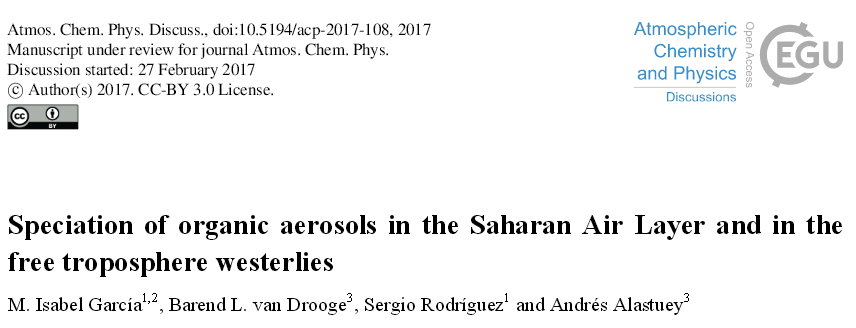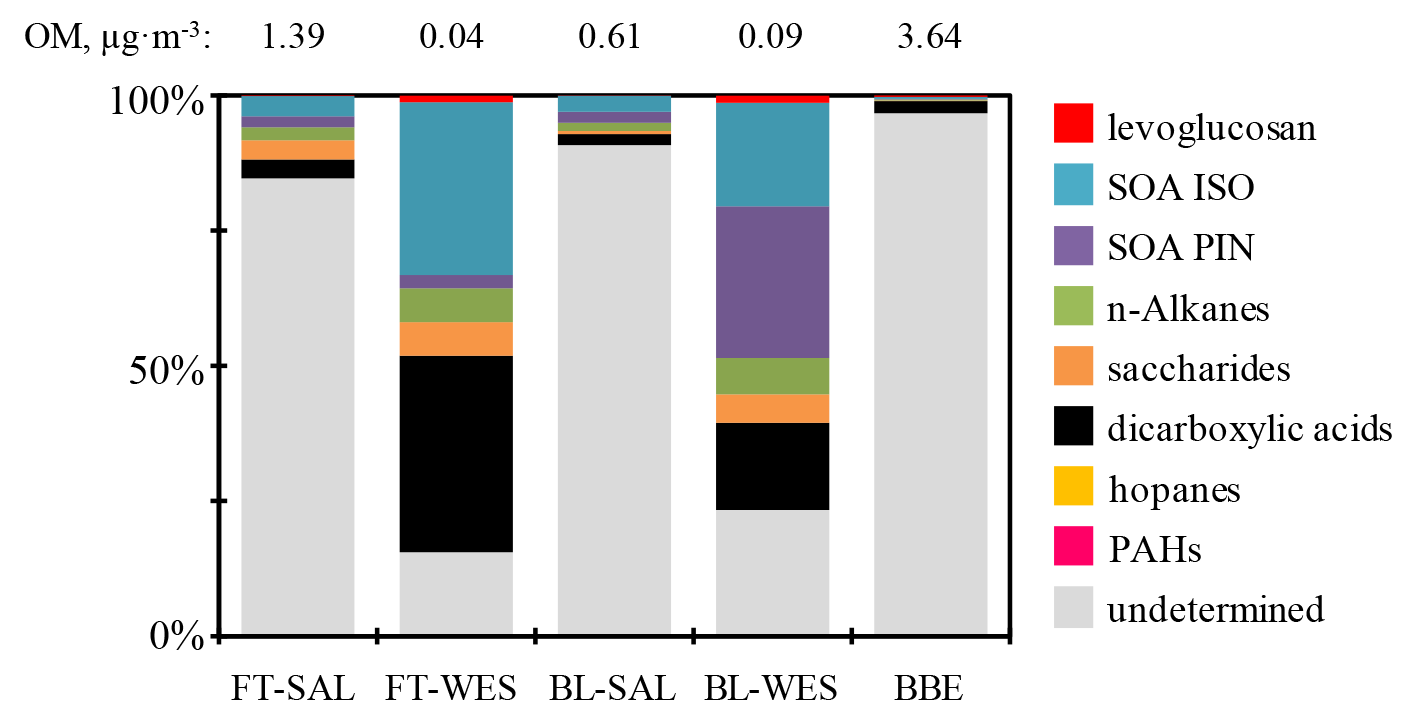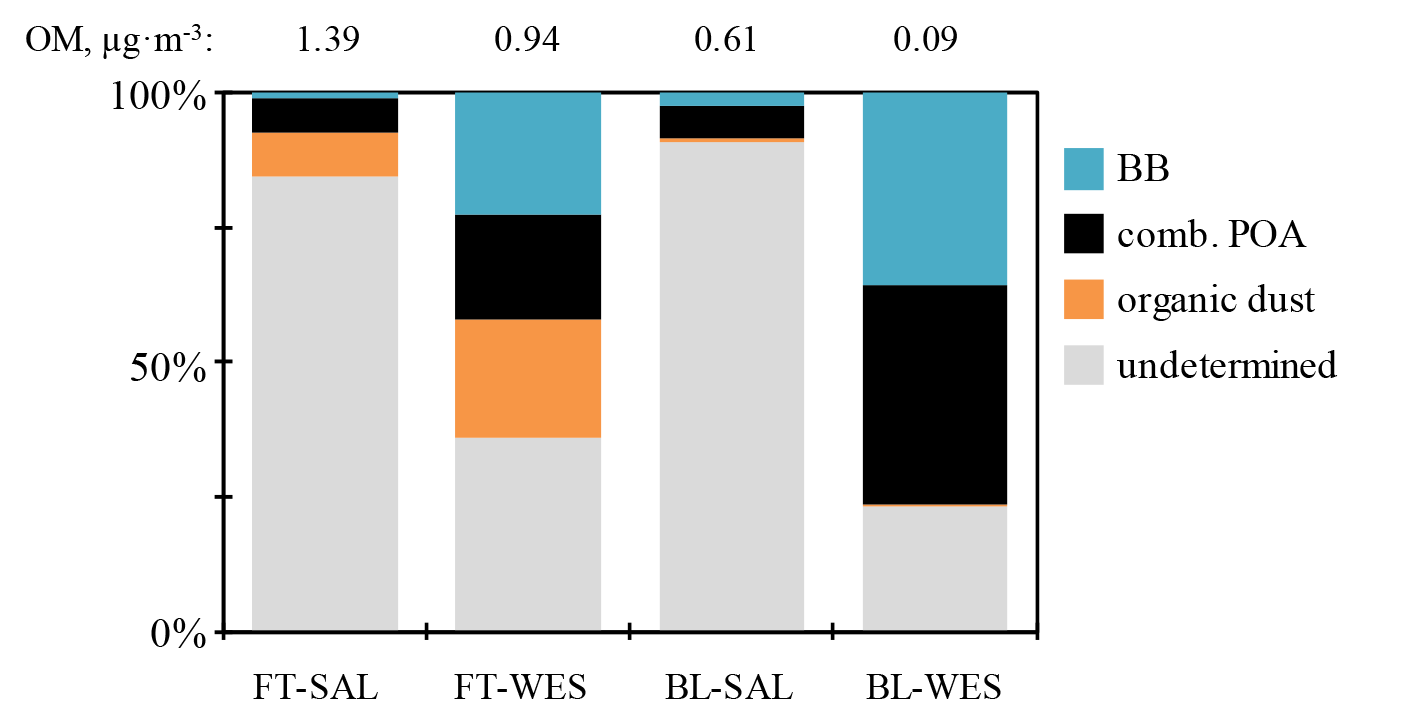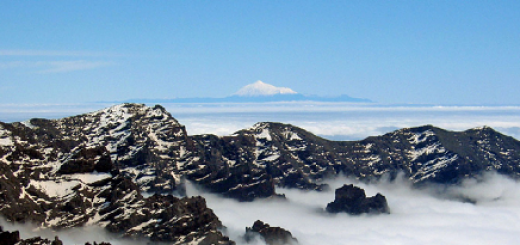The new article entitled “Speciation of organic aerosols in the Saharan Air Layer and in the free troposphere westerlies” has been published in Atmospheric Chemistry and Physics Discussions.
![]()

Atmospheric Chemistry and Physics Discussions (ACPD) has published in the last volume a study performed by Scientists of the Izaña Atmospheric Research Centre (IARC) entitled “Speciation of organic aerosols in the Saharan Air Layer and in the free troposphere westerlies”. The paper is opened for public review and discussion until the 24th April 2017.
Atmospheric aerosols – liquid and solid particles blowing in the air – influence on climate, human health, continental and marine ecosystems, and visibility. The magnitude of these effects depends on the aerosols composition, which may include sea salt, mineral dust, secondary inorganic species (e.g. sulphate, nitrate, ammonium), elemental carbon and a number organic species constituting the so-called organic aerosols (OA). OA account for an important fraction of particulate matter, ranging from ~20% (continental mid-latitudes) to ~90% (tropical forested areas), and come from both natural (e.g. vegetation, soils, wild-fires) and anthropogenic (e.g. fossil fuel combustion, biomass burning) sources; OA is constituted by tens of thousands organic species.
The most extended technique (i.e. thermo-oxidant combustion and optical detection) to quantify the amount of organic carbon in the atmospheric aerosols does not provide information on OA speciation, sources and therefore, the properties related to impacts. Alternatively, gas-chromatography coupled to mass-spectrometry (GC-MS) analysis of aerosol samples allows the speciation of the organic compounds and the quantification of many of those identified as tracers to distinguish sources and processes contributing to the OA budget.
In this study we focused on the composition of the organic aerosols (performed by GC-MS) transported in the two main airflows of the subtropical North Atlantic free troposphere (FT): (i) the Saharan Air Layer (SAL; the warm, dry and dusty airstream that expands from North Africa to the Americas at subtropical and tropical latitudes) and (ii) the westerlies (WES; which flows from North America through the North Atlantic at mid and subtropical latitudes). In addition, a group of samples were collected within the influence of the boundary later (BL). We analyzed a total of 40 organic tracer species (levoglucosan, dicarboxylic acids, saccharides, n-alkanes, hopanes, polycyclic aromatic hydrocarbons and those formed after oxidation of α-pinene and isoprene) in order to characterize the OA and distinguish its possible sources. The contribution of the eight analyzed organic groups to the Izaña organic matter (OM) composition can be seen in Fig.1.

Figure 1: Contribution of the eight analyzed organic groups to the Izaña organic matter (OM) composition within the free troposphere (FT) and the boundary layer (BL) under the SAL (FT-SAL and BL-SAL) and the WES (FT-WES, BL-WES, BBE). Average total OM for each air mass is on top. FT-PMT samples were collected during the night (22–6 GMT) and BL-PM2.5 samples were collected during the day (10–16 GMT).
In the FT Saharan Air Layer, the aerosol composition was dominated by dust (93%), secondary inorganic pollutants (<5%) and organic matter (~1.5%). The organic compounds (determined by gas-chromatography coupled to mass-spectrometry) accounted for a 15% of the bulk organic matter and were related to soils (saccharides), biogenic secondary organic aerosols linked to isoprene oxidation (SOA ISO) and natural and anthropogenic primary sources such as vegetation and motor exhaust emissions (dicarboxylic acids) (Fig. 1).
In the FT Westerlies, the organic matter represented a higher fraction of the total aerosol bulk (~28%) and the determined organic compounds accounted for an 64% of the organic matter with dicarboxylic acids and SOA ISO being the most abundant (Fig. 1). In this airstream, a long-range atmospheric transport of a biomass burning plume from North America was detected, supporting the atmospheric stability of levoglucosan over transport and time under certain conditions.

Figure 2: Contribution of the identified organic aerosol sources to the total organic matter within the FT and the BL under the SAL (FT-SAL and BL-SAL) and the WES (FT-WES, BL-WES, BBE). Average total OM for each air mass is on top. FT-PMT samples were collected during the night (22–6 GMT) and BL-PM2.5 samples were collected during the day (10–16 GMT).
To distinguish potential sources of OA, chemometric techniques were applied on the OA tracer compounds concentrations. Three sources of organic aerosol, which contribute to the organic matter composition in this part of the North Atlantic, could be resolved in multivariate analysis: one biomass burning-related, one primary combustion-related and one organic dust-related (Fig. 2).
Citation: García, M. I., van Drooge, B. L., Rodríguez, S., and Alastuey, A.: Speciation of organic aerosols in the Saharan Air Layer and in the free troposphere westerlies, Atmos. Chem. Phys. Discuss., doi:10.5194/acp-2017-108, in review, 2017.
The article can be download at:






